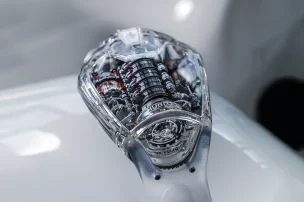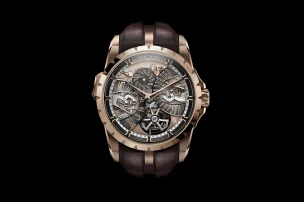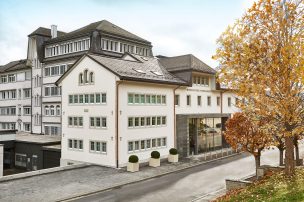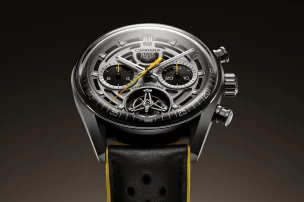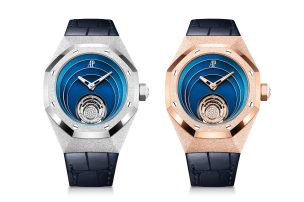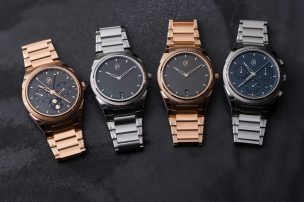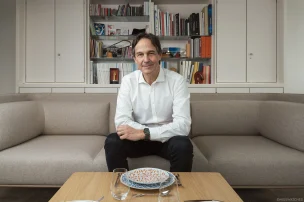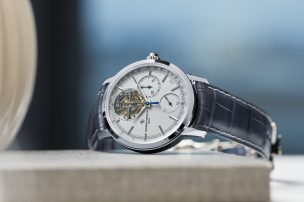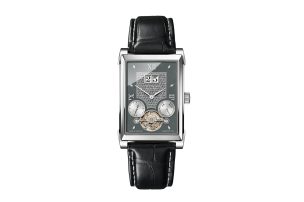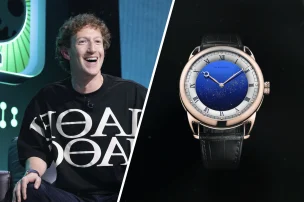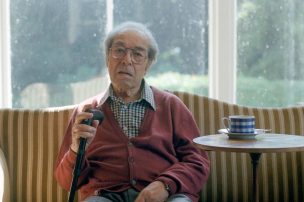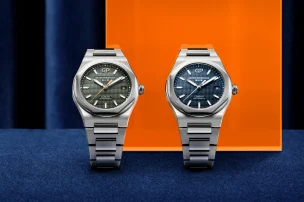
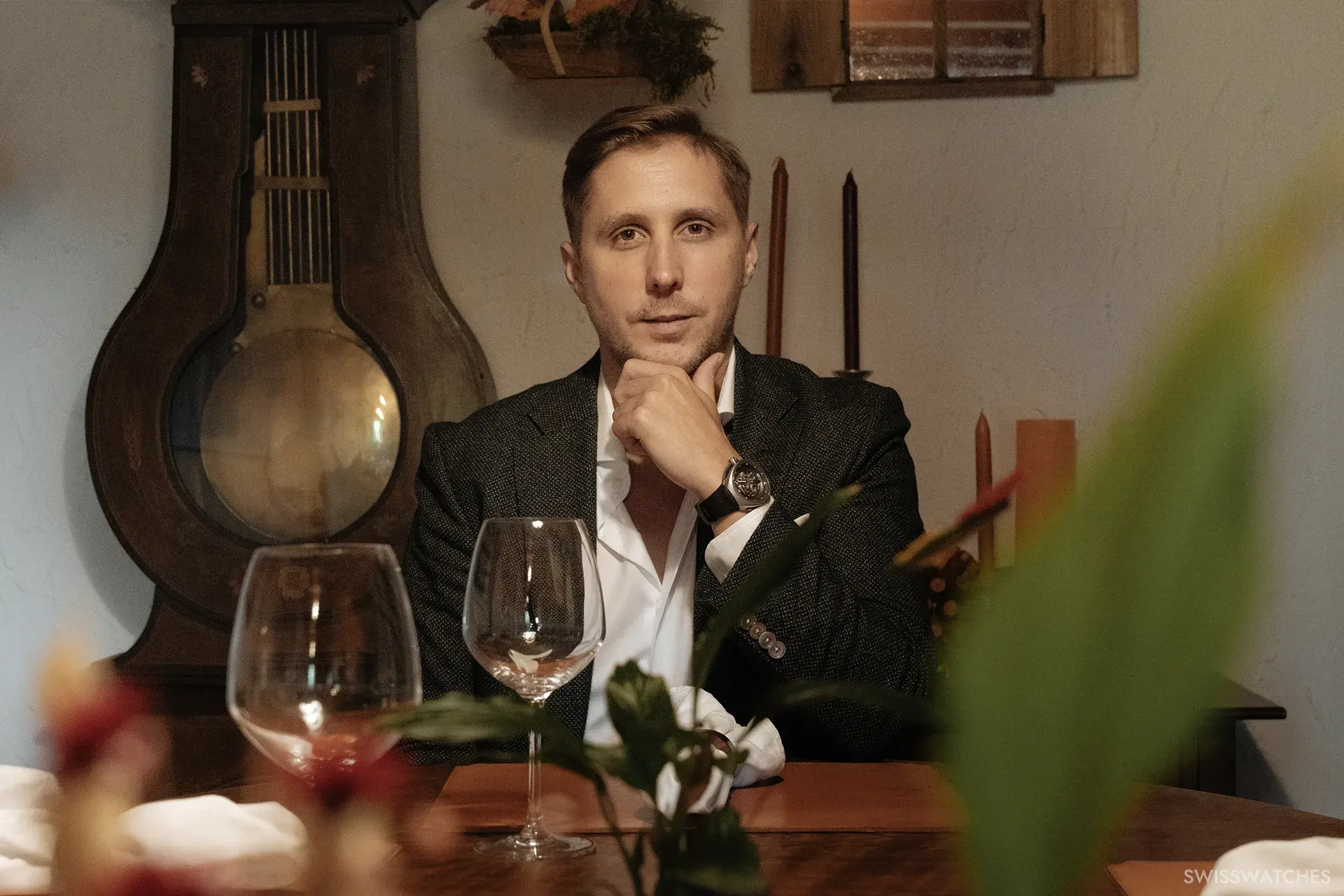
Lunch With: Vanguart CEO Axel Leuenberger
Vanguart is a brand founded in 2017 by Axel Leuenberger, Jérémy Freléchox, Thierry Fischer and Mehmet Koruturk, who designed and produced a completely new tourbillon mechanism on their own in just three years. The Blackhole displays the time in an unconventional but utterly ingenious way. This year saw the launch of the young brand’s second model, the Orb. Vanguart currently produces just 30 to 40 watches a year – and already has two strong distribution partners at its side in Ahmed Seddiqi (Middle East) and Material Good (USA). We met CEO Axel Leuenberger for a lunch in La Chaux-de-Fonds to find out more about the story behind its foundation, the visions and future plans of the four men and their Vanguart brand, as well as the role played by Audemars Piguet Renaud Papi.
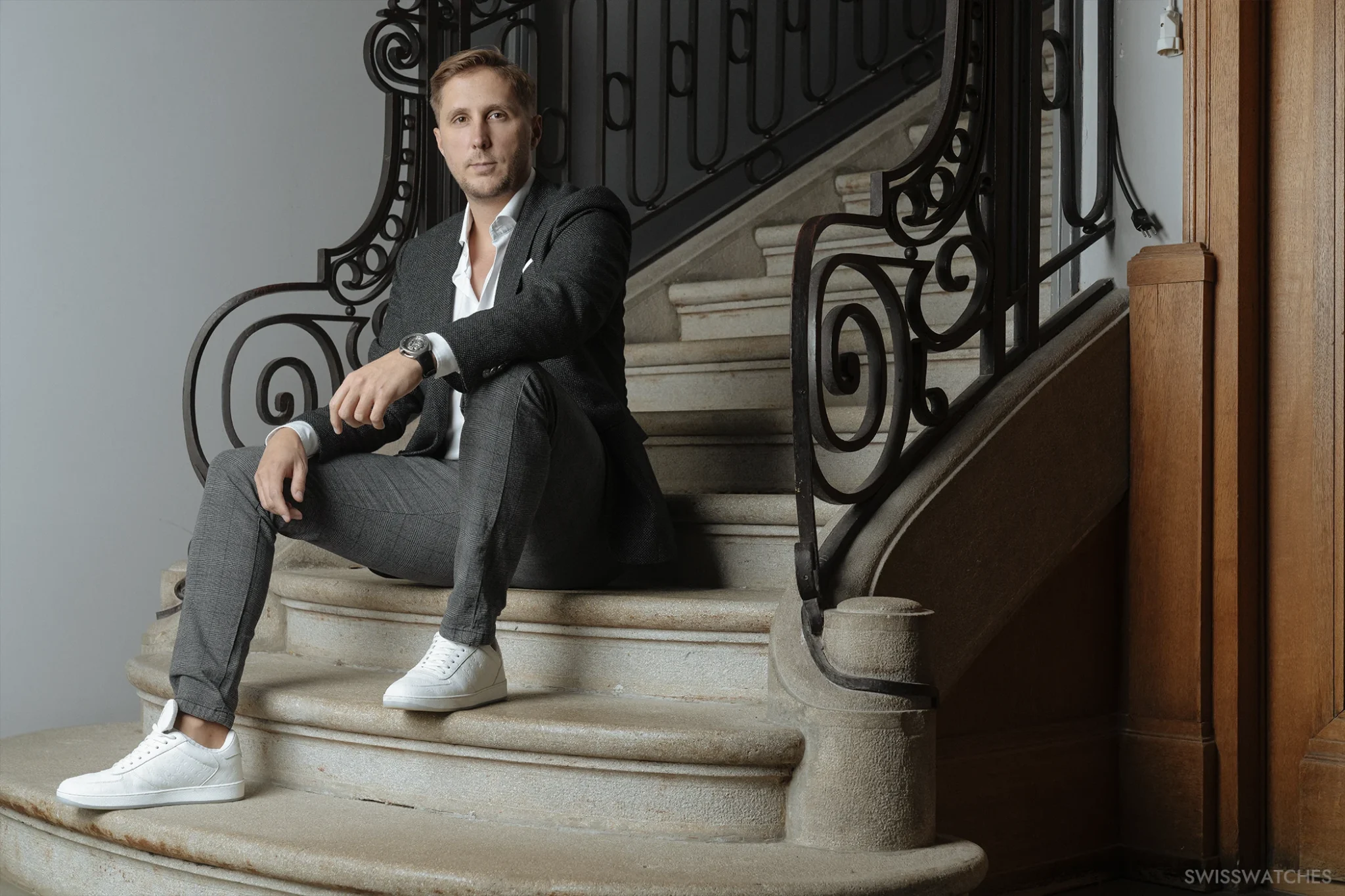
What does a mechanical watch mean to you? Which watch are you wearing today and which do you wear most often?
I have always been interested in mechanical engineering, and the fact that we are able to put so many moving and interacting things into such a small space fascinates me. As a child I played with Lego and I find watchmaking to be somewhat similar.
I discovered my passion for mechanical watches quite late in the day – I wore watches when I was younger, but not mechanical ones. But when I discovered the beauty and depth of the mechanics, I became passionate about it.
Today I am wearing our Orb Titanium, which is the second watch model we launched.
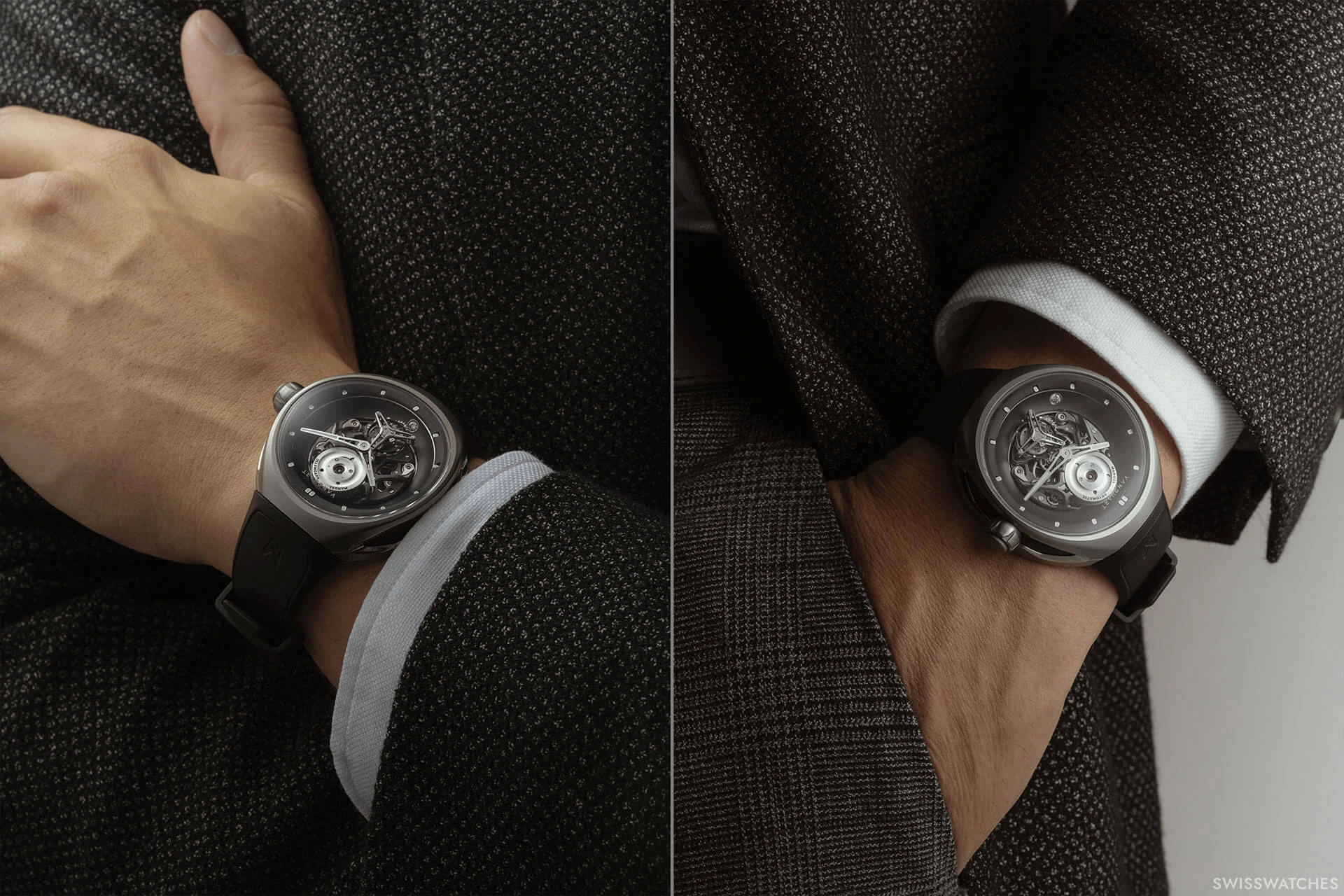
The founding team of Vanguart consists of four people: Thierry Fisher, Jérémy Freléchox, Mehmet Koruturk and you as CEO of the brand. How do you all know each other?
Jérémy and myself met at Audemars Piguet Renaud Papi in 2010, where we spent most of the time as colleagues. We were working on different projects together, and for the case design the company used an external supplier called Etude De Style where Thierry was working, so the teams from Etude De Style and Renaud Papi came together and worked on the project together. This is where we met Thierry. Thierry did the famous Tourbillon Black Hole concept watch that garnered a lot of attention online, and we were amazed by that, and later it became actually our first project at Vanguart. Then we met Mehmet through a friend, and he also had the desire to do something new in the watchmaking world.
Who is responsible for which tasks in the company?
Thierry is our Creative Director and responsible for the design and concept of the watches. Our Chairman Mehmet is responsible for marketing and sales. And Jérémy is our Chief Technical Officer and looks after our movements and all technical aspects. I am the CEO, so I am always jumping from one thing to the other. I am neither a designer nor an engineer, but I am able to meld the ideas together.
What exactly does Vanguart stand for?
At the beginning, we had the idea of Vanguart meaning ahead of the curve and we changed the name slightly to end with art. We had hundreds of names, but you start to select and filter at one point, and this became our working name – and in the end, also our official brand name.
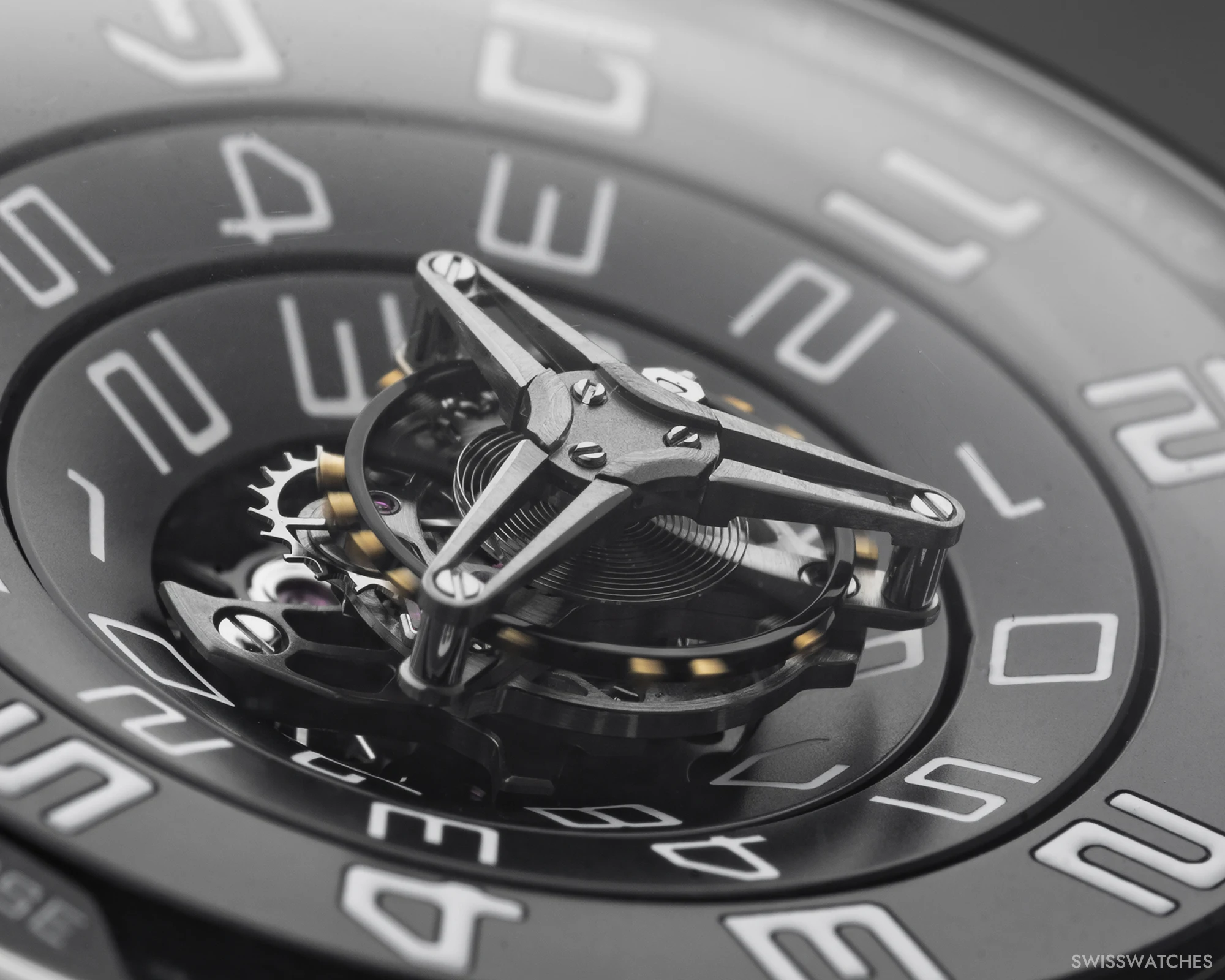
Who was the first client?
We had a few people from Asia and the Middle East who showed interest at the same time. They were collectors of Patek, AP, Richard Mille etc., and they wanted something new.
Like Jérémy Freléchox, you previously worked at Audemars Piguet Renaud Papi. What experience and skills did you bring with you to Vanguart?
A good knowledge of the watchmaking scene and a really good idea of how you should do a product. Some things need to be respected in order to make a good product. And APRP was a good school for that. Also, we built up a very good network of suppliers who we now work with very closely.
Do you manufacture the movements completely in-house? How high is the vertical range of manufacture at Vanguart?
We do all the technical drawings and calculations in-house, and we also decorate the complex titanium components in-house. However, we outsource some of the less complex finishing because of our limited capacity, allowing us to keep our focus on the extreme ones.
How many employees do you have at Vanguart?
By the beginning of next year, we will be 15 people in our team. We will have two people for the design, three people for the technical department, two people for finishing, two master finishers and three people on the watchmaking benches. We also have some staff for administrative tasks.
The Blackhole was your first model. The time display is quite complex. How many years did you spend developing the movement?
The developing process took us three years and we initially wanted to launch it in 2020 but due to Covid, it was not possible. We found that you have to wear our watches to understand what they are all about. So, we used that year to do even more tests. When we finally launched it in 2021, we were really pleased with the quality and proud to have a complication combination that has never been done before.
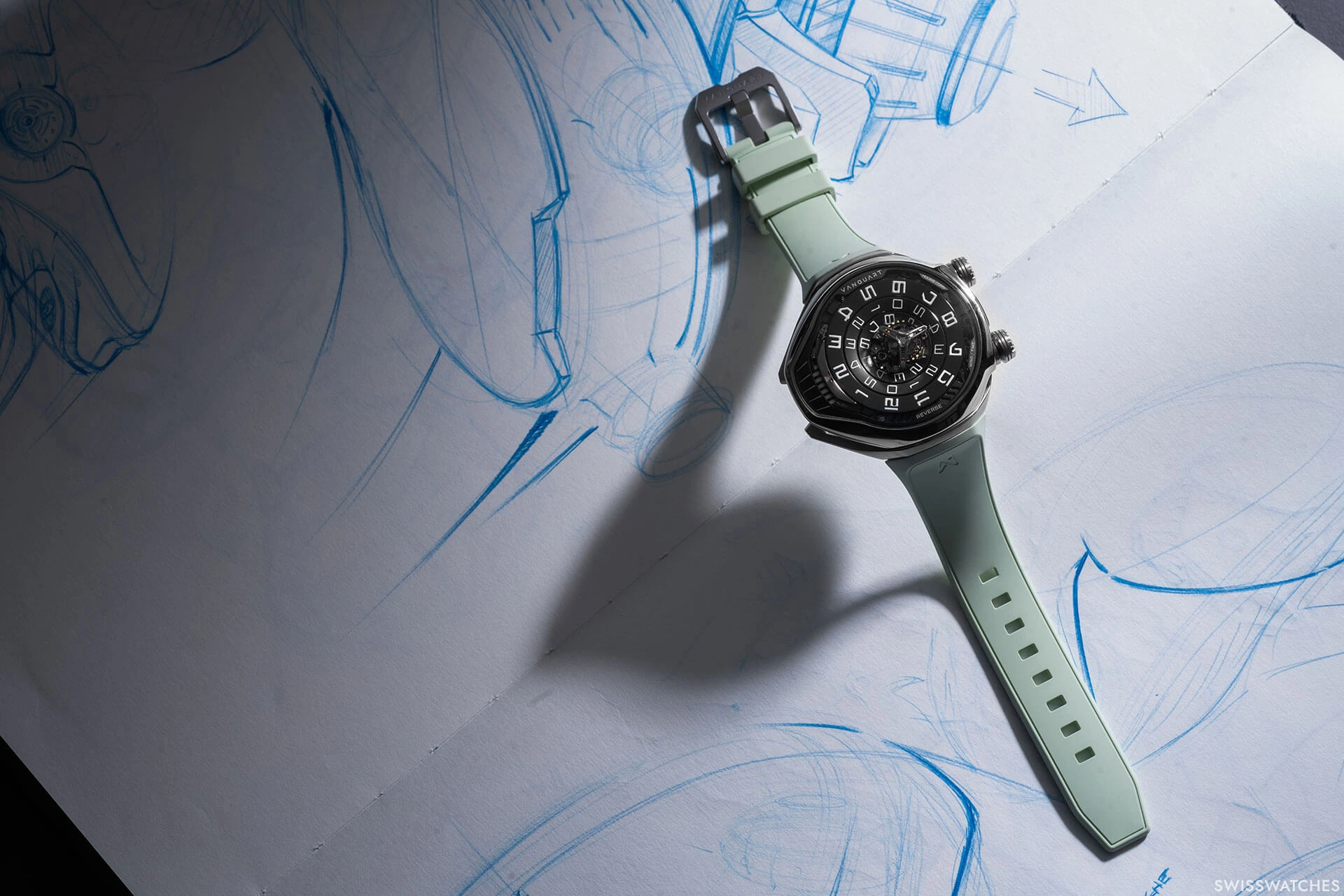
How were you able to finance the establishment of a new brand and the development costs?
At the beginning we started a fund raising through Mehmet using contacts we had before, and besides that, we also kept doing freelance jobs like design or mechanical calculation for other brands, which helped us to finance the brand.
What were the main challenges you faced at the beginning?
You have to do a lot with little money – every cent counts. The biggest challenge was creating a prototype with little money. You know when big brands create prototypes of new watch models, they throw a lot of money out of the window. We couldn’t afford that. In the end we did four prototypes for the Blackhole and seven for the Orb Tourbillon.
What is the price range for the watches?
The Blackhole costs around 320,000 EUR. The Orb around 150,000 EUR.
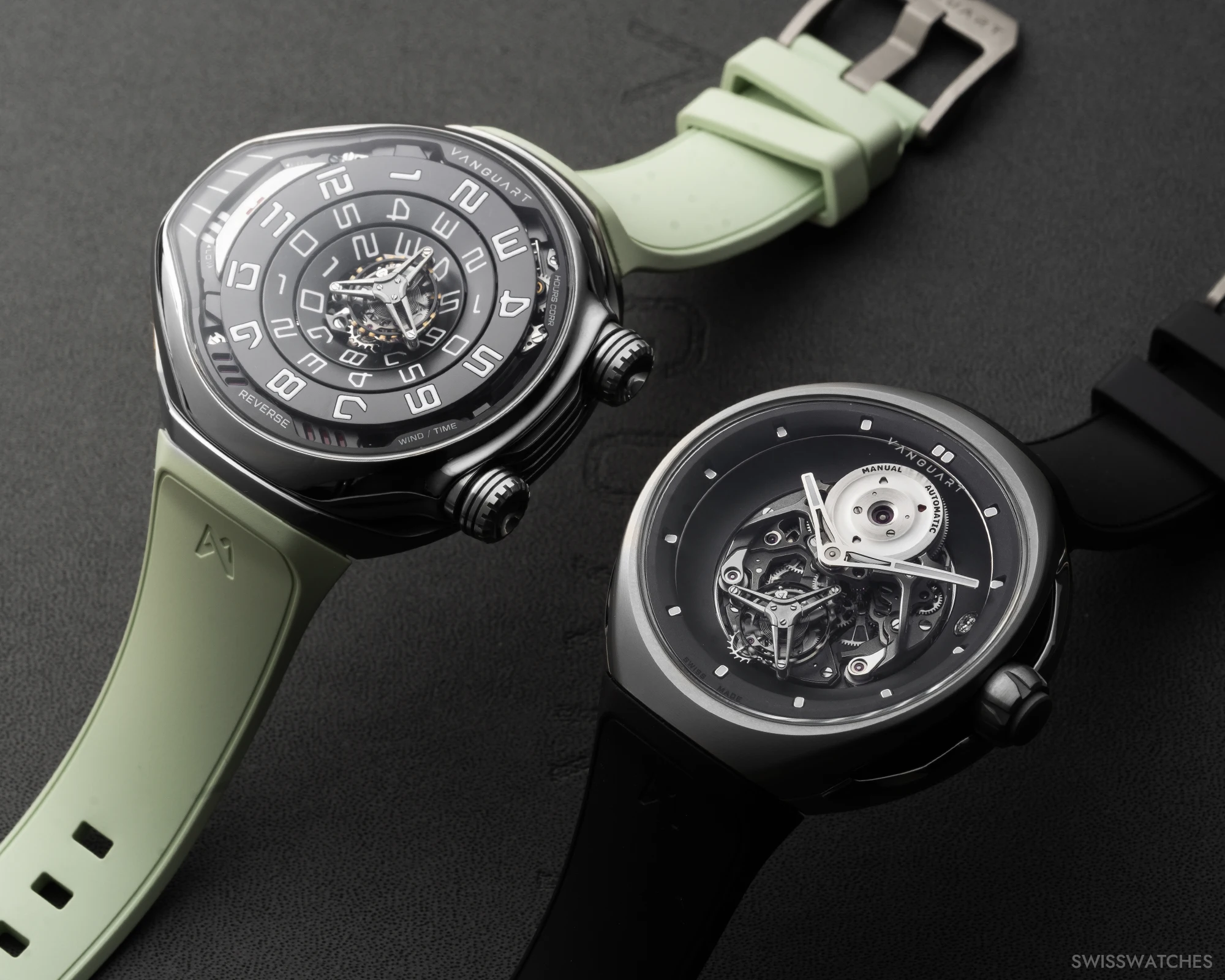
Through which distribution channels are your watches sold?
At the beginning it was only direct sales. Lately we teamed up with two partners one in Middle East (Ahmed Seddiqi) and one in the US (Material Good).
Which markets are currently the strongest and which markets would you like to enter in the future?
Currently we are pushing the US and Middle East, and have some sales in Europe and Asia, too. We will focus more on Asia in the near future. We don’t have enough production to supply another continent yet.
What is the annual production volume?
This year we will produce 30 to 40 pieces. In 2025, a bit more than 50. It is not a lot, but we take the time to make things good.
There are currently two watch models, the Blackhole and the Orb. At what intervals would you like to launch new models? Can you already give us a sneak preview of the next watch you are working on?
We would love to launch a watch every year but we firstly need to increase the production before we consider new product families. But you can expect something fresh from us in 2026 or 2027 at the latest. There will be an evolution of the two current models and a completely new line.
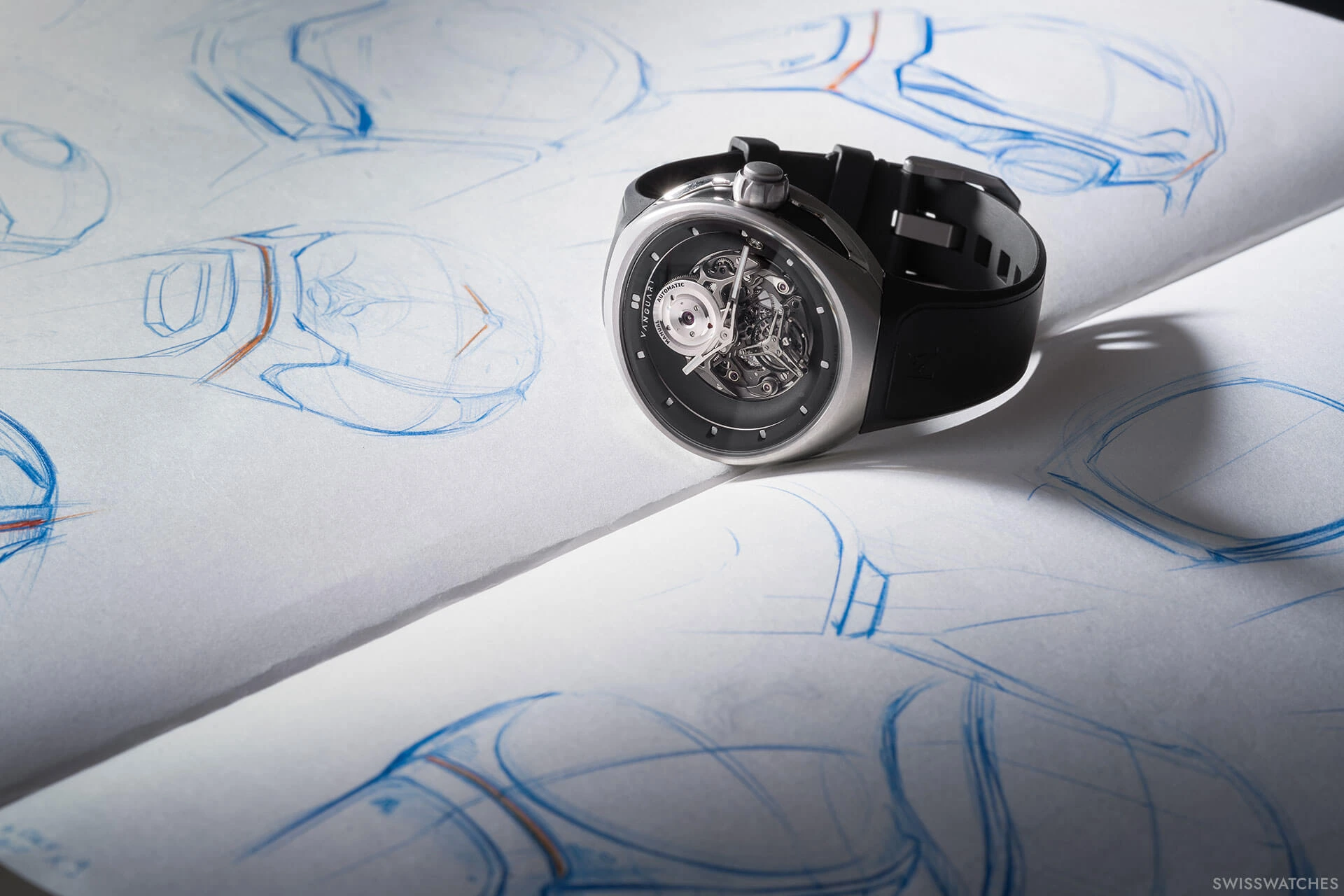
In what direction do you think the watch industry is headed?
It always goes in circles in my opinion. You have a hype moment; some brands overproduce, which eventually leads the market to stop producing. Then it will recover, and it goes up again. Also, it’s important to note that different segments experience different things. We have a low production, which leads to different challenges than big brands with high production volumes. We are not really subjected to the market.
